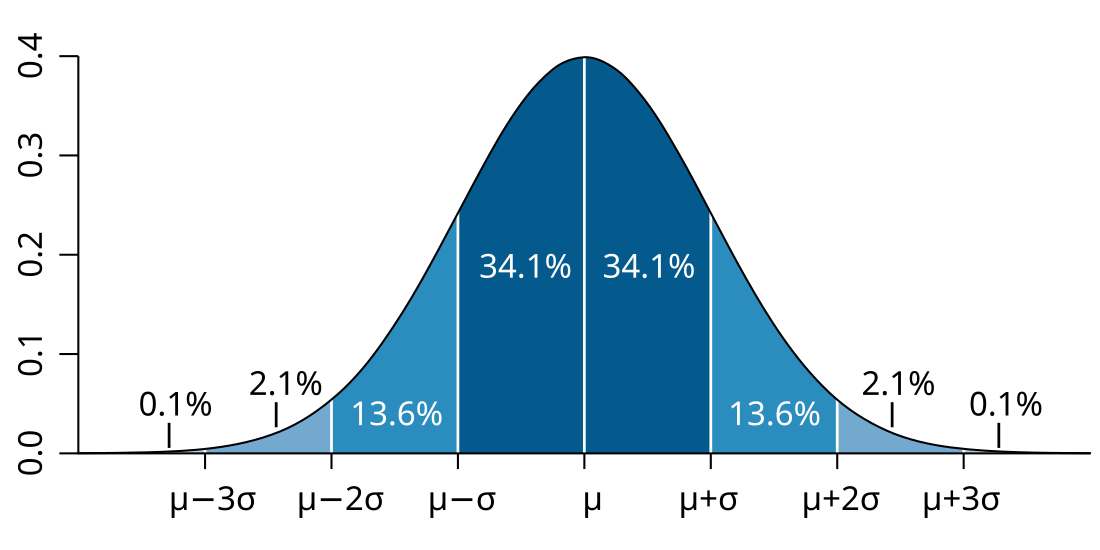Boole's inequality
Inequality applying to probability spaces From Wikipedia, the free encyclopedia
In probability theory, Boole's inequality, also known as the union bound, says that for any finite or countable set of events, the probability that at least one of the events happens is no greater than the sum of the probabilities of the individual events. This inequality provides an upper bound on the probability of occurrence of at least one of a countable number of events in terms of the individual probabilities of the events. Boole's inequality is named for its discoverer, George Boole.[1]
This article includes a list of general references, but it lacks sufficient corresponding inline citations. (February 2012) |
Formally, for a countable set of events A1, A2, A3, ..., we have
In measure-theoretic terms, Boole's inequality follows from the fact that a measure (and certainly any probability measure) is σ-sub-additive. Thus Boole's inequality holds not only for probability measures , but more generally when is replaced by any finite measure.
Proof
Summarize
Perspective
Proof using induction
Boole's inequality may be proved for finite collections of events using the method of induction.[citation needed]
For the case, it follows that
For the case , we have
Since and because the union operation is associative, we have
Since
by the first axiom of probability, we have
and therefore
Proof without using induction
Let events in our probability space be given. The countable additivity of the measure states that if are pairwise disjoint events, then
Set
Then are pairwise disjoint. We claim that:
One inclusion is clear. Indeed, since for all i, thus .
For the other inclusion, let be given. Write for the minimum positive integer such that . Then . Thus . Therefore .
Therefore
where the last inequality holds because implies that for all i.
Bonferroni inequalities
Summarize
Perspective
Boole's inequality for a finite number of events may be generalized to certain upper and lower bounds on the probability of finite unions of events.[2] These bounds are known as Bonferroni inequalities, after Carlo Emilio Bonferroni; see Bonferroni (1936).
Let
for all integers k in {1, ..., n}.
Then, when is odd:
holds, and when is even:
holds.
The inequalities follow from the inclusion–exclusion principle, and Boole's inequality is the special case of . Since the proof of the inclusion-exclusion principle requires only the finite additivity (and nonnegativity) of , thus the Bonferroni inequalities holds more generally is replaced by any finite content, in the sense of measure theory.
Proof for odd K
Let , where for each . These such partition the sample space, and for each and every , is either contained in or disjoint from it.
If , then contributes 0 to both sides of the inequality.
Otherwise, assume is contained in exactly of the . Then contributes exactly to the right side of the inequality, while it contributes
to the left side of the inequality. However, by Pascal's rule, this is equal to
which telescopes to
Thus, the inequality holds for all events , and so by summing over , we obtain the desired inequality:
The proof for even is nearly identical.[3]
Example
Suppose that you are estimating five parameters based on a random sample, and you can control each parameter separately. If you want your estimations of all five parameters to be good with a chance 95%, what should you do to each parameter?
Tuning each parameter's chance to be good to within 95% is not enough because "all are good" is a subset of each event "Estimate i is good". We can use Boole's Inequality to solve this problem. By finding the complement of event "all five are good", we can change this question into another condition:
- P(at least one estimation is bad) = 0.05 ≤ P(A1 is bad) + P(A2 is bad) + P(A3 is bad) + P(A4 is bad) + P(A5 is bad)
One way is to make each of them equal to 0.05/5 = 0.01, that is 1%. In other words, you have to guarantee each estimate good to 99%( for example, by constructing a 99% confidence interval) to make sure the total estimation to be good with a chance 95%. This is called the Bonferroni Method of simultaneous inference.
See also
References
Other related articles
Wikiwand - on
Seamless Wikipedia browsing. On steroids.














































